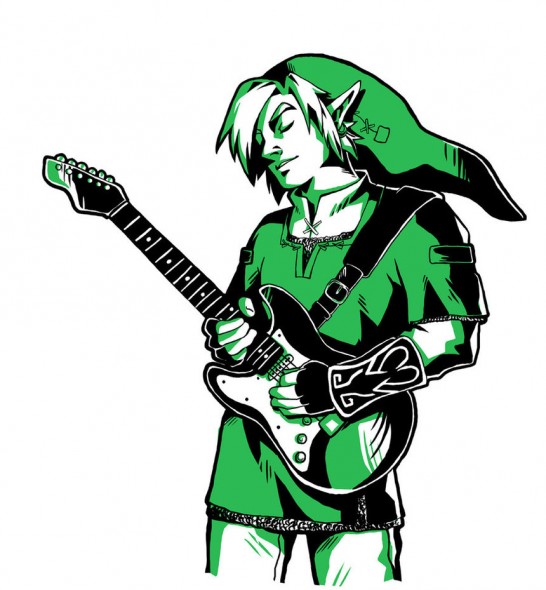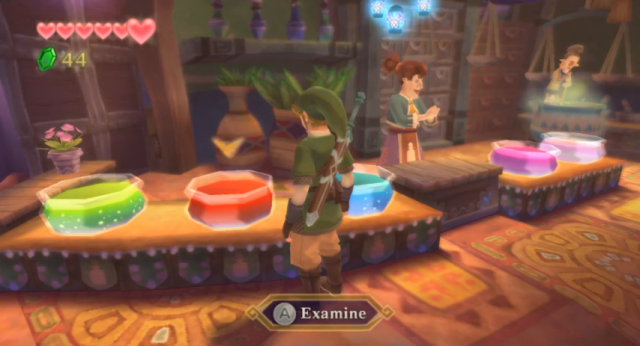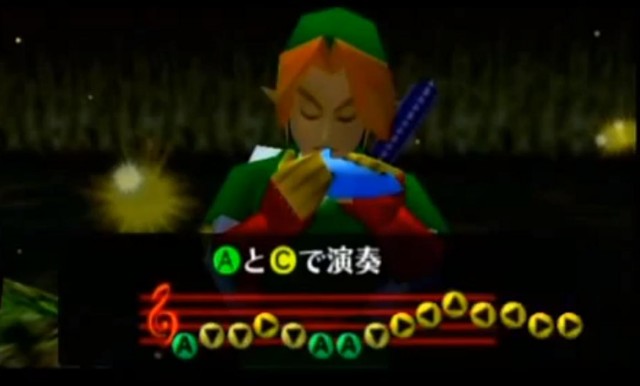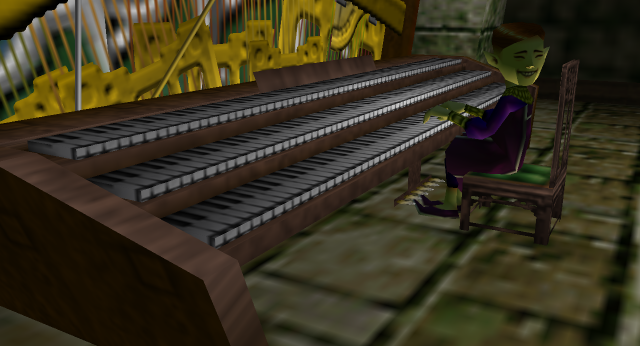Improving and Expanding Upon the Element of Music in Zelda
Posted on June 21 2013 by John
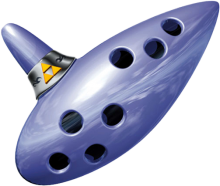 One cannot underestimate the importance of music in games. Music helps shape environments, enhances emotions and atmosphere, and provides welcome relief to sections of games which would be otherwise ultimately meaningless without it. The entire tone and feel of a game can be changed through the music, as can the perceptions of the elements of the game itself. Music can be seen as just as an integral part of experiencing a game as the gameplay, characters and plot, so it’s no surprise that to many people, a game devoid of music would be a game not worth playing. But even so, this doesn’t mean that games always get the musical aspect spot on. Take Zelda, for example.
One cannot underestimate the importance of music in games. Music helps shape environments, enhances emotions and atmosphere, and provides welcome relief to sections of games which would be otherwise ultimately meaningless without it. The entire tone and feel of a game can be changed through the music, as can the perceptions of the elements of the game itself. Music can be seen as just as an integral part of experiencing a game as the gameplay, characters and plot, so it’s no surprise that to many people, a game devoid of music would be a game not worth playing. But even so, this doesn’t mean that games always get the musical aspect spot on. Take Zelda, for example.
The music of Zelda, to use the old British colloquialism, does exactly what it says on the tin. In other words, it does its job, and it does it well. Boss battle themes are suitably threatening and fast-paced, town themes are generally cheerful and evocative of the busy, bustling atmosphere associated with them, and overworld themes are always made to encapsulate the sense of adventure and exploration which the series does so well. To many, Zelda is synonymous with music, and with good reason.
However, recently I’ve been thinking that in contrast to other aspects of the series, the music of Zelda has not received the level of treatment it deserves when it comes to actual progression and innovation. I’m not saying that there is anything inherently wrong with the way music is handled in Zelda currently, but there are ways in which it may be improved and expanded upon for the benefit of future games. How so? Well, below are a few ideas which are my personal thoughts on how I would like to see the concept of music in Zelda would be handled in the future.
1. Retain the quality of background music
The first improvement isn’t actually an improvement at all, but rather a suggestion as to how the music should be kept in accordance to previous games. Actual improvements in the quality of music itself will be a welcome addition in the next home-console Zelda game, but to be perfectly honest, quality is one thing which I think the music of Skyward Sword got absolutely spot-on and therefore needs little change on its part. After the slightly disappointing MIDI soundtrack of Twilight Princess, the use of live instruments in the music really did do wonders for the overall feel and sound of the game, with certain tracks in particular giving specific locations and cut-scenes that extra edge which not only enhanced the relevant settings and emotions, but also helped contribute to the game’s resultant stellar collection of music as a whole.
The inclusion of the harp as a playable instrument in Skyward Sword was questionable, to say the least. But you have to admit, it did sound good.
After all, who can forget the bright, sprightly pizzicato strings introducing the area of Faron Woods, the beautiful and emotionally sweeping trombone of the Crimson Loftwing theme, the mystical, enrapturing and courage-inspiring sound of the pan pipes in Fi’s Theme, or the truly genius use of the xylophone to help establish that genuinely unsettling and mysterious atmosphere of the Lanayru Mining Facility? I could go on, but the point is that the use of live instruments holds so much musical potential which Skyward Sword only scratched the surface of, so the return of this element in Zelda Wii U is in my opinion, an absolute must. So we’ve got the actual quality of the background music ticked off, but will we necessarily have to see the return of live traditional orchestral instruments? My next improvement elaborates on this point.
2. Experiment more with styles and genres of music
Bar a couple of noticeable exceptions, the music of Zelda games has always seemed to lean more towards the traditional western orchestra sound, utilising many standard instruments such as violins, harps, flutes, trumpets, pianos and ocarinas, amongst others. I think that the reason for this is that the traditional orchestrated sound has always been synonymous with games which have a more “realistic” look in terms of graphics, or at least are fairly realistic in terms of environments and character models. This trend started off with A Link to the Past, where the 16-bit graphics allowed for much more detailed and realistic environments, and so consequently a much more varied soundscape than Zelda’s 8-bit origins. We progressed from simple nondescript chiptune beeps to triumphant-sounding trumpets in the overworld and ominous strings in dungeons. The trend has generally continued with games like Ocarina of Time, Twilight Princess and Skyward Sword, all of which have soundtracks in which western instruments generally dominate.
The two exceptions to the typical conventional style and feeling of gameplay are, of course, Majora’s Mask and The Wind Waker. The Wind Waker has a dominantly Celtic and European feel, utilising folk and baroque instruments such as fiddles, harpsichords, flutes, harps, bodhráns and bouzoukis. Tracks such as the Title Theme and Windfall Island are typically evocative of folk, but the Dragon Roost Island Theme curiously deviates from this dominant Irish tone, using Spanish flamenco guitar, castanets, pan pipes and double bass to carry across a distinct Incan and South-American feel. This only adds to the level of musical variety in the soundtrack, though, and it’s because of its unique mix of styles and instruments that The Wind Waker remains my favourite soundtrack of the series.
Onward, to musical variety!
Majora’s Mask, as Koji Kondo so brilliantly describes, has an “exotic Chinese-opera sound” throughout. High-pitched and piercing woodwinds are supplemented by strange metallic percussion sounds, with instruments like zithers are erhus used to add texture. The resultant sound is a peculiar one, but succeeds in fusing both oriental and western styles to complement the game’s equally strange atmosphere and storyline. Oath to Order’s lamenting string solos and the Majora’s Incarnation battle theme are good examples of how Eastern musical styles come into play and complement the game’s unique style and direction.
So, previous games aside, what am I trying to say about the future of Zelda? Well it’s quite simple: ditch the usual western orchestra arrangement for the time being and experiment more with styles and genres of music. I like to think of Majora’s Mask and The Wind Waker simply as the beginning in a long line of more exciting and experimental games: not just in graphics and gameplay, but also in music. There are so many directions that Nintendo could take with genres of music that it’s almost overwhelming. How about music based around traditional African themes and music, with pounding percussion and melodies consisting of tribal calls and ululations? Or perhaps a Southern-Asian soundtrack with atmospheric sitars, feverish tablas and unique Gamelan bell chimes and percussion? We may even see a totally different direction being taken in the introduction of a fully electronic soundtrack, taking cues from pioneering artists such as Kraftwerk and Steve Reich. Countless other genres of music are also open, including rock, techno, dance and perhaps even jazz. Whatever the genre, just ditch the conventional western orchestra, please.
deviantART user Natasha Small gives us an insight into the possibilities of a rock-themed Zelda. Come on, you can’t say that that wouldn’t make for a truly epic game.
I’m not asking for a full-out soundtrack dominated entirely by just one genre (Majora’s Mask and The Wind Waker both feature traditional orchestra-based tracks) but the opportunities for Nintendo to reach out and create music which shows direct influence from genres other than Western Classical are highly abundant. Remember Ghirahim’s Second Battle music, with the Spanish-influenced castanets? That’s the sort of thing I want to see more of, just on a much wider scale.
But if anything, what I would truly love to see is the implementation of proper vocals within the music. Skyward Sword has already laid the foundations for this with Zelda singing the Ballad of the Goddess, but we’ve yet to see any examples of music which utilise fully-fledged human lyrics (English, Japanese, Latin, etc), as in these excellent tracks from the Final Fantasy series. The Pokemon series has already made the progression to human vocals within background music in the form of Roxie’s Gym Theme, so why not Zelda? Realistically speaking, it’s unlikely we’ll ever see anything similar to the emotion of Suteki Da Ne or the sheer scale and drama of One-Winged Angel in a Zelda game, but one can dream!
3. Implement interactive elements
We move away now from the actual technical aspects of the music itself and look towards how tracks and the element of music can be further implemented and integrated into the game world. The first suggestion is key to making background music within the game more immersive and tangible to the player – interactive elements.
Zelda has already in fact displayed numerous examples of context-sensitive changes in music. One instance is in Hyrule Field in Ocarina of Time, where the music would transition from calm and cheery to ominous and pressing when an enemy would come within attacking distance of Link. This intuitive implementation of musical versatility meant that the player no longer had to rely on visual clues as to whether enemies were close-by, instead using the changing music to gauge the status of Link’s surroundings. The best example though, is Skyloft’s Bazaar, which maintains the same tune throughout, but changes the instruments and the style of the music according to which section of Bazaar Link is standing in. An intriguing and involving implementation, but unfortunately, it is the only one of its kind in the series as of yet.
So how take this further? We look again to Pokemon and its advancements in musical implementation as an example. Generation V of Pokemon included a lot of new innovative musical features, the most notable implementation being the Village Bridge: here, the music starts off initially as just a simple solo guitar, which is then built upon by talking to NPCs who will “perform”, adding vocals, flute, additional guitar plucking and even a beat-box line to the background music to form the complete track. Other examples include Route 3, where an additional percussion line is added when the player character is running, and Anville Town, where a flute is added to the track when coming close to an NPC who is shown actually playing a flute in the game.
The Bazaar in Skyward Sword is the first step in background music becoming a more prominent feature of the games themselves.
It’s a small touch, but does wonders in making the game world that little bit more immersive. Bringing background music out of the background and into the foreground as a minor, yet changeable element of the game world would do well to truly make the game world come alive; even more so than usual, considering the integral part music plays in so many scenes in games.
This wouldn’t just make listening to music within the games more enjoyable and interesting (tracks which simply loop over and over with little change do get tiresome in games), but I think the concept of music and musicians within the Zelda games is one which has been overlooked quite often. One or twice in the series, we encounter a location such as Pamela and her father’s house in Ikana Canyon or the Kakariko Windmill and we are given some context as to why a particular piece of music is playing: information such as who is playing the music and why the player is hearing it at this particular location. As such, this leads to a slightly perplexing issue – if we are shown that background music in the games often comes from a source, i.e. someone playing or making the music, then what of the other 95% of the locations in Hyrule which have background music and yet have no visible source? Is the music played in places like Hyrule Field and Kakariko Village actually just the audial manifestation of the continuous mindless internal humming of our green-clad, sword-wielding hero?
Of course, it would be absurd for every single location to have a person or a band sitting in the corner, churning out music continuously, but it is a question which has always been of quiet intrigue on my part. I’m actually starting to lean towards the “internal humming of Link” hypothesis – for one thing, it would actually provide an explain as to the increasingly despairing and urgent variations of Clock Town in Majora’s Mask; perhaps the background music in this particular scenario was the developer’s way of actually expressing Link’s thoughts and feelings, if not through words then through the medium of music.
4. Change the role of instruments in games
So up until this point I have managed to side-step quite a large aspect of the series which pertains to music: musical instruments. I am certainly undecided on my personal opinion of this particular aspect of the series; having flutes and ocarinas serving as warping items in early Zelda games was a pretty nice idea, as was the progression to fully playable instruments in games like Ocarina of Time and The Wind Waker. But as Axle the Beast pointed out in an editorial a while back, instruments in games like Twilight Princess and Skyward Sword felt far too forced, far too artificial and disconnected from the actual game to feel like a natural fit for the game’s repertoire of items. The point is that a game would be far better off going without an instrument than having to endure a token item placed in there because the original basis for putting it in there was because someone felt like it should be in there.
Instruments like the Ocarina of Time may initially seem like an innovative idea, but in actuality they’re just slightly more elaborate “keys” used to unlock “doors” (this particularly applies to Zelda’s Lullaby, which essentially only serve one purpose, to remove obstacles and to initiate sequences). There’s nothing really wrong with the way instruments are used in the gameplay of the series (excluding of course, Skyward Sword and perhaps Twilight Princess), but my issue goes deeper into the actual world of Zelda. I am here talking mostly about the plot and storylines.
One thing which has always confused me is that instruments are always prominent in the gameplay of the series, but when it comes to the actual storyline and plot, they always seem to take a backseat. Why? (it goes without saying that the harp in Skyward Sword is the exception here, as it has absolutely no value in terms of gameplay or storyline). Instruments are generally prominent in the gameplay in the games they appear in, but two games so far in the series have gone so far as to have been named after in-game instruments: Ocarina of Time and The Wind Waker. Why then, do they have such little roles in the game itself, and are simply used as a means to get to the meat of the story while the item itself is generally simply ignored?
Ocarinas have feelings too, you know.
The titular ocarina in Ocarina of Time, for example does not actually play a significant part in the storyline. It is given to Link by Zelda as she and Impa are escaping from Hyrule Castle and it is used to open the Door of Time and retrieve the Master Sword, thus allowing Ganondorf access into the Scared Realm, but it generally sort of disappears until the very end, where it is used by Zelda to transport Link back to his own time. Even making the transition from Saria’s Fairy Ocarina to the Ocarina of Time is fairly minimal; the only major differences are the colour and the ability to open the Door of Time (which incidentally only happens once in the game and you can never play the Song of Time on the Fairy Ocarina anyway). If anything, the Fairy Ocarina is more significant sorely for its sentimental value: serving as a symbol of Saria and Link’s friendship and how it comes to an end as Link uncovers his destiny to save Hyrule and learns the truths about his past and upbringing. One could argue that Link’s many interactions with Sheik and learning the dungeon warping songs serves as development to the plot, but the purpose of these scenes: to build anticipation and mystery regarding Sheik’s identity and motives could have easily been utilised elsewhere, with the learning of the warping songs really being quite insignificant (yes they allow you to warp to dungeons directly, but most become fairly useless after the respective dungeon is completed, especially given the inclusion of Epona to speed up transport).
In a similar fashion, the Wind Waker itself is not presented as a core item important for the progression of the storyline. There is no doubt that, like the Ocarina of Time, it plays an integral role as an item in the game, but I find it confusing why this doesn’t translate into the story of the game itself. The Wind Waker is simply handed to Link by the King of Red Lions on Dragon Roost Island with a rather hazy description of its history and purpose, which is never mentioned or expanded upon later on in the game. I think that the developers missed a trick by not weaving the item into the storyline and history of the flooded Hyrule, and as a result it falls into the old patterns of Ocarina of Time and the Wind Waker itself remains somewhat of an irritating mystery.
And don’t even get me started on this thing.
Don’t get me wrong; these are by no means significant points which detract from the respective games at all. On the contrary, a little mystery and intrigue never goes amiss when building up to a wholly rewarding and satisfying ending. But that’s the problem – these games have significant build-up, but half-baked conclusions. The Ocarina of Time and the Wind Waker are still very much question marks, their significance only limited to the world of gameplay and shallow interactionism without any depth or meaning as to why Link must utilise these items to progress in his quest. Even the question of where the King of Red Lions was hiding the Wind Waker before the arrival at Dragon Roost and how it ended up in his mouth to give to Link is one of the great mysteries surrounding the Zelda series today (well at least I think so anyway).
I always think that the ending is the most important part of a game as it is the section which leaves that lasting impression and mark on the player after they had finished, formulating the retrospective opinion of the overall quality of the game itself, so I couldn’t help feel a little cheated at how these conflicts and questions were simply left unanswered at the end of The Wind Waker and Ocarina of Time. Surely if we’re going to be whipping out some sort of magical, ethereal wind-controlling, statue-moving, boat-warping, temple-opening Swiss Army Knife as our tool every five minutes throughout the game, then we deserve at least some vague context as to what the instrument is and where it comes from, even more so if the game itself is named after it. Gameplay comes first, yes, but that doesn’t mean that storylines have to be shunted to the back and given a rough deal just because they’re less important, especially when it comes to the significant issue of applying music and musical instruments to more than just gameplay.
Conclusion
I suppose what I’m trying to get across from this is that I want to see, above all, changes in the music of the series. Attending the Symphony of the Goddesses concert in London a few weeks ago was a very enjoyable experience, but it certainly did seem that there was a certain degree of consistency transcending the music and how it was being played. Yeah alright, so consistency is rarely a bad thing, but with consistency comes familiarity, and from familiarity breeds contempt. Looking back over the twenty seven years of the series, I struggle to pinpoint one particular moment where I can say that the music of the series really changed for the better. Everything about the music in the games just feels distinctly… safe.
I think at the end of the day, it’s up to Nintendo to make the decision whether to keep with the standard formula of the Zelda series or take the leap into the unknown and pull something completely different and unexpected out of the bag. This issue can be applied not only to the music of the series, but the games themselves as well. Sometimes I think that Nintendo are a little bit too suspicious of change, despite change being what I (and hopefully most of you who are reading this) really want from the series. Maybe next time do away with the harp in the Fairy’s Fountain theme and use an organ or a theremin instead? Or take the Tadtones sidequest from Skyward Sword and change it into something a little less frustrating and repetitive and a little more musically inclined rather than it just being a simple collecting quest? Whatever it is, just something brilliant and unexpected and something which will truly make the music of Zelda a memorable experience.
Or a Zelda rhythm game. But that’s an entirely different matter altogether.
I’d like to hear what you think. Do you agree with the above points in regards to changing the music of Zelda? Do you think the way music is handled in the series needs changing in any way, at all? How would you implement these ideas in the games if you had the power? Tell us in the comments below.





